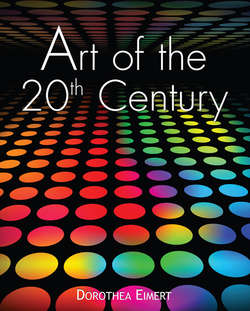Читать книгу Art of the 20th Century - Dorothea Eimert - Страница 13
На сайте Литреса книга снята с продажи.
Surreal and Magical: Between the World Wars
Pittura Metafisica
ОглавлениеIn order for a work of art to be truly eternal, it must transcend the boundaries of humanity. Good common sense and logical thinking do not apply. The artist must bring forth a truly deep work from the most remote depths of his being. There, no rushing rivers, no birdsong, and no rustling leaves can reach.
The Italian, Giorgio de Chirico, put down these thoughts in 1914. It was at this time that he began to discover the world of painting called Pittura Metafisica. The path that led him here took from 1911 to 1919, and, from 1917, Carlo Carrà followed it as well. They met in January 1917 at a military hospital at Ferrara. They had already heard of one another. Carrà was among the leading Futurists, and de Chirico had been counted by Apollinaire among the most astonishing painters of the younger generation. The poet Alberto Savinio, the brother of de Chirico, was at the same hospital in Ferrara. He wrote a sort of fantasy literature that was close to Kafka and Kubin. They named their new artistic style, Pittura Metafisica. A short time later, Giorgio Morandi joined them.
These three representatives of this artistic style, which, next to Futurism, was the most significant Italian contribution to art in the first half of the 20th century, referenced the tradition of the great Italian masters. They did not want to create a new form of painting, but rather create a new vantage point for seeing things. The tangible world of experience had been changed under new conditions. These artists needed to redefine the basic laws of the classical: a spatially expansive perspective, as was customary in the Renaissance and Baroque; architecture as a backdrop, as it is to be found in the works of Giotto or Piero della Francesca; an austere language of shapes that praises the great, the exalted, and the everlasting. These young Italians were transferring these precepts to a new age, an age whose spirit and atmosphere stood in complete contrast to those of the classical era.
Giorgio de Chirico had studied at the Munich Academy of Art, where he had become acquainted with Max Klinger. The art of Bröcklin and the philosophy of Nietzsche impressed him. In his younger years, he began to paint a sort of ‘unconscious’ paintings in which the elements in a painting were brought together in unusual combinations. He lived in Paris from 1911 to 1915. In 1925 he returned there. He brought the aspect of the unconscious and counter-reality into Pittura Metafisica after 1916. This exercised a lasting influence upon the Surrealists.
The goal of Pittura Metafisica was, according to de Chirico, ‘to construct a new metaphysical psychology through painting.’ In 1919 he wrote down his thoughts:
Almost everything has two aspects: There is the normal aspect that we almost always see. Then, there is the ghostly, metaphysical one that rare individuals might see in moments of clairvoyance and metaphysical abstraction. A work of art must speak poetically about something that is far away from the figures and objects, as well as what its material shapes conceals them from us.
An oppressive silence prevails in the paintings of de Chirico. Empty squares, streets without people – there are no living beings, no vegetation, only decoration. The figures appear artificial and unreal, as do the architectural elements; a faceless anonymity reigns in the paintings. The figures and architectural elements are artificially extended in height or length and have enormous shadows. The monumentality of the decorations appears to extend into the infinite. All elements are bound into an overdrawn and overextended central perspective, into a reference system that seems to be directed by an unseen force secretly at work. It is a metaphysical painting style bordering on the unconscious, where the outsized becomes real, what in daily life is not possible becomes possible.
It is the peace and the nonsensical beauty of the painting that appears metaphysical to me. And to me, the things that appear to be metaphysical are those that through the clarity of colour and exactness of measurement are the opposite of incoherence and vagueness… One must imagine everything in the world to be a riddle. (de Chirico)
